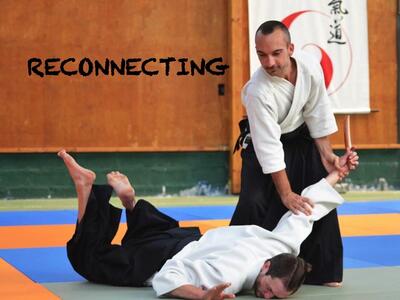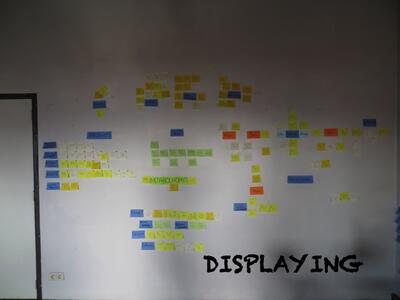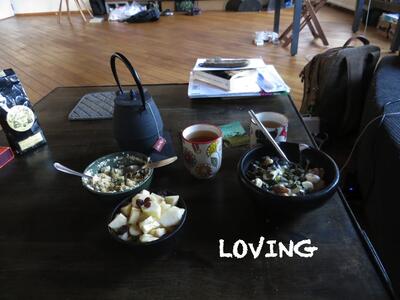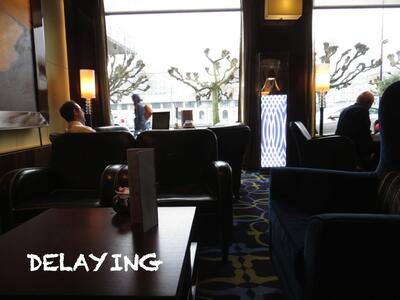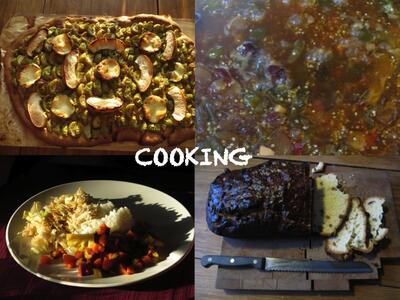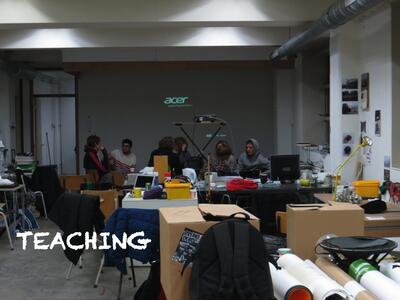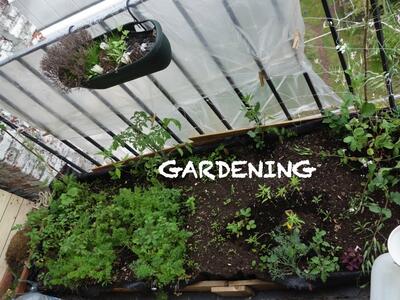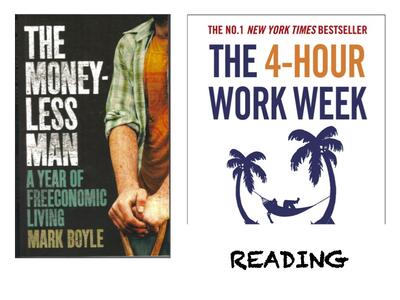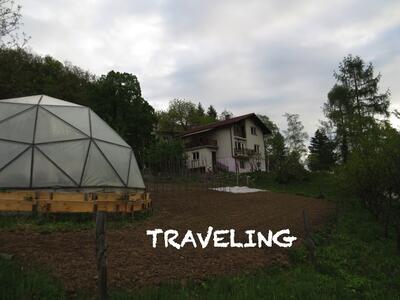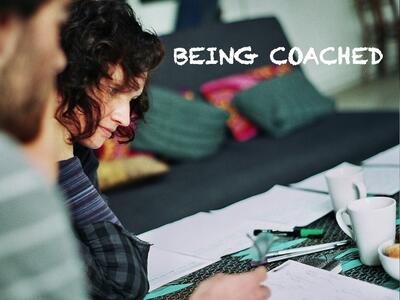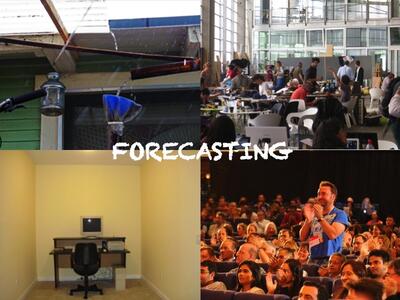This is an old revision of the document!
Transiency Summary
My year spent as a MacroTransient at FoAM is now over. One year of not being a student, not being an employee, not being unemployed. One year with no expectations. One year of incredibly pure freedom of action, movements and thought. One year to re-design a lifestyle, figure out tough life choices, defining a personal and professional identity. One year of careful help from FoAM to try to answer that crazy questions: “What do I want to do with my life ?”
Below is an attempt to summarize this crazy year, and maybe give you a hint of how this feels, or even give you the will to go through the same difficult but rewarding process.
Before this year
Winter - Decelerating
After a very intense year, and a quite active travelling period in the autumn, the first thing I needed to do was to decelerate. A quite tricky process when all your standards tell you that action is the only valuable thing. I had to face the emptyness of some days, during which tiredness & procrastination were the only two words coming to my mind to define them. Anyway, a few important deep processes took place during the first months of this transiency.
Reconnecting
One of the first actions I took when I arrived in Brussels was to sign up to an Aikido class.
After more than seven years of focusing on mind development, my body needed to catch up. I knew it would be difficult, and I was looking forward to this quiet period to take the time to start the difficult task to reconnect my body and mind.
Why Aikido to reconnect body and mind ? One of the things I also needed to start working on was my recurring panic whenever I was confronting with any somewhat violent confrontation. I therefore wanted to practice a martial art, as I though it would help me both reconnect body mind and help me deal better with violent situations. Aikido being on of the closests martial art to the “non-violent” philosophy - or at least my professor advocated so on his website, I thought it would be a good starting point.
As expected, it has been far from easy. For the first time since years, I felt completely dumb at something, like if I had no grasp on how to learn gestures. I started to learn three months after most of the students, and constantly felt holding them back with my stupid ununderstanding. Moreover, the (fake) violent situations were there, and being put to the ground more than fifty times in two hours, having to get back on my feet everytime, was far from easy in a setting were I already felt dumb. Self-esteem was having a hard time.
After a year of practice, I can feel some progress. I feel more body conscious, and I feel like I am a bit less sensitive in slightly violent situations. New students have arrived in the dojo, and they helped me find out I had learned something. I also decided to go to the training max once a week, to dilute the potential bad feelings. I feel I can progress more easily now, and I am willing to continue.
Displaying
In December, I gathered all my notebooks since June 2012, when the Transiency had been proposed to me. I had carefully noted down since then every single thing I wanted to do once I would be a resident at FoAM.
So I took a whole load of post-its, and wrote down every single activity and posted them on the wall, attempting to sort them out.
After two weeks of scrutinous transcription, I ended up with a ten years amount of things to do. Problem: a Transiency is one year. Some choices were to be made. I hate choices.
Loving
Hopefully, some sweetness was here in the middle of the two hard challenges I just mentionned.
Amélie and I had been together for a few months at the beginning of this Transiency. Thanks to this new period opening in my life, we now had breakfast together every morning. We also spent the Aikido-free (on my side) and teaching-free (on her side) nights together, often doing nothing else than having a tasty (vegetarian) lunch together, and chatting.
Compared to the lifestyle I had in Paris, in which I would pile up conferences, projections and meetups on top of my full working days, I can say that Amélie really helped me discover the world of Doing Nothing. And I deeply appreciate it.
Delaying
In January, I was lucky enough to receive a job offer from my Master Thesis Supervisor. He was (and is) starting a small company on the topic of artificial closed-ecosystems, a life-support system which uses living organisms to filter water, cycle nutrients and transform carbon dioxide back into oxygen. Such a system is essential for long travels in space, as we cannot carry everything we need to survive several month in space if we single-use them. Such tehcnologies are not only relevant to space though, they are also relevant to sustainability, as they can lead to very efficient pollution control and recycling technologies.
He proposed me to join in as the first employee of the structure, starting from March.
Even though the Transiency work had not been easy so far, I could not think about stoppping so early. I had a lot of deep personal work to do, probably way more that what I envisioned in the first place, and I would definitely not even be started with most of it by March. I had to say now.
I understood in this experience how hard it can be to say no to an offer when you do not know exactly how to phrase what you would do instead, and you can only intuitively feel it is very important.
Hopefully, my Master Thesis Supervisor did not take it the wrong way, and offered me the job again last August. But more on that later.
Cooking
FoAM Brussels being a temple of cooking, I spent some time trying a few recipes, and cooking lunch occasionally to the FoAM team.
In addition to reducing my reliance on industrial food, it also helped me decelerating & reconnecting body & mind.
Teaching
In September 2013, Cocky Eek from FoAM Amsterdam proposed me to come as a guest lecturer in her Tactile Research Lab, a class she is teaching to ArtScience Students from the Royal Academy of Arts in Den Haag for several years now.
I felt very honored to be proposed to co-teach in such an environment, and was very happy with this experience. We helped a small group of students try to figure out how they could integrate their artpiece in long time frames, make them “sustainable” in the deep initial sense of this word.
I was confronted their with highly creative students, and a complete new way of teaching. This way of teaching is way more personal, intricated with the personality & life trajectories of these students.
I wish I could bring part of this way of teaching to my engineering school, as I think it would help have engineers concerned with society, conscious of their personal issues, and more able to question the myths and taboos of the society they live in.
Gardening
One of the initial objectives of this year was also to learn practical know-hows to include more DIY in my daily life.
FoAM Brussels gave me a “carte blanche” for a garden on their small balcony. I went to purchase seeds to the marvelous http://www.bio-logiques.org/index.php?option=com_content&view=article&id=175:fraternites-ouvrieres-a-mouscron&catid=100&Itemid=518|Fraternités Ouvrières garden, and started some seedlings. Which died when I travelled - see below. I started again some seedlings, which died again. A few lived through my periodic travels, and managed to give some fruits - mainly red radishes, carrots and tomatoes - both yellow and red.
This experiment in itself gave me an idea of how hard it is to rely on my own food production, and how devoted and sedentary I had to be. Which made me re-think completely the self-sufficient hypothesis.
Spring - Seeding
After decelerating, and hitting in different ways the reality wall, I needed to plant seeds of what a post-Transiency life could be. I was lucky, it was Spring, a good period to plant seeds.
Reading
I needed to feel inspired, and learn from others' experiments. So I picked up two experiment-based books from my reading list: The Moneyless Man, and The Four Hour Workweek.
The Moneyless Man is about the experiment Mark Boyle performed over one year. He tried to live without earning, spending or using any money during one year. It is great book, easy to read, and full of tips on how to reduce your reliance on a destructive monetary economy. However, I could not find any answers to the two most pressing questions I had with moneyless lifestyle:
- How to get healed in case of a big incident ? Mark Boyle relied on the rights he precently acquired to the British Security system. However, the book gives hints on how to self-heal yourself with plants, and how mutual aid provides you help when you deeply need it.
- What happens to your social life with less coherent people ? Mark Boyle says that it was one of the most difficult aspect of his experiment. He could not spend time with friends in money-based social activities, which is OK for one year, but for more ? Does it make sense to transform your social network for the sake of coherence ?
I think it is important for me to be able to meet people which opinions are far away from mines, to understand better their viewpoints and what builds the difference between me and them. I have the feeling that if I live such a life, I will cut myself out of such opportunities.
The Four Hour Workweek is a book about entrepreneurship. This world has always interested me, as I like the strength and perseverance of people getting involved in the creation of a company. However, I always felt distant from them in the sense that I am not attracted by the idea of devoting all my time to one single project, thereby risking to lose everything in case of failure.
This book gave me a quite uncommon answer. What if your company was designed to bring you money back to do whatever you want to do ? Even though I do not agree with all the strategies proposed in this book, I like the idea of designing your income source so that you can maximize your freedom of lifestyle - and not necessarily try to merge both. It was a very pleasant, inspiring and thought-provoking read.
The full reading list of this year is available here.
Traveling
One of the things I disliked with my studying & working lifestyles was the forced sedentarity induced by the fact of having to follow courses / having to work in a give place. However, my initial hypothesis was to become self-sufficient, which means even more sedentarian.
It was one of the conclusions of this Transiency: I prefer to travel than to garden. As I discovered this in April, I traveled a lot ever since.
The very first important trip of this year was to Slovenia, a place where Amélie lived for a couple of years. After visiting Ljubljana and some very nice friends there, we moved to the countryside to spend some time at Rolling Hedgehog.
Rolling Hedgehog is a self-sufficiency experiment, led by Amélie's ex-roommates in Slovenia. We spent three day here helping in the garden, drinking schnaps & kombucha, gathering bear's garlic to prepare Forest Pesto, and eating cheerfully all together copious meals to fill our bellies emptied by the countryside work & fresh air.
It was a wonderful stay, however I understood that I would not transform it into a lifstyle. I would love to introduce slices of several weeks of this lifestyle, but I would also like to be able to escape it, and see other people, other places, other parts of the world.
The self-sufficiency hypothesis was dead.
Being Coached
Besides being actively followed by the FoAM Brussels' Core Team, I had the chance to go through a coaching program with a professional coach, Vali Laliotti.
During six sessions, we tackled deeply rooted brakes which left me doubtful and/or discouraged. Through very precisely phrased and chirurgically-targeted questions, Vali helped me unravel deep nodes in order to constructively & effectively move forward.
For instance, after six sessions, I was able to precisely phrase what I felt was my mission in life. I also learned practical ways to be more efficient in my work, especially with unpleasant tasks, and how to deal with emotionnally perturbing events.
I think that this process was one of the two most effective ones in the whole Transiency. I feel like I am work - and do stuff in general - more effectively, more peacefully, and - most importantly - with more passion.
And yes, I will talk about the second process later.
Forecasting
Between April and June, the FoAM Brussels Core Team guided me through the Transiency Scenarios process. This scenario planning process, fed by the works done by FoAM on this topic for a few years now, aimed to use futurology methodologies to understand better what your possibles futures are as an individual, and help you better understand dynamics at stake and make decisions on your life trajectories.
At the end of the process, we obtained four scenarios representing extreme situations. Scenario narratives can be found here:
Such scenarios can be used as a compass. Thanks to this work, I could better understand which of my decisions would guide me to one or the other futures.
We also designed a masterplan of what to do from today on to reach the possible futures, which helped understand which actions I should start now in order to reach the future I want to implement.
Meditating
At our very first Transiency meeting, I was talking with Maja, Rasa & Nik about my issues of body-mind connection, and my focusing issues I was experiencing since the middle of my studies. At that time, Maja had advised me to go through the Mindfulness 8-weeks course (MBSR), she thought it would help me with this. Her Dutch-speaking mindfulness teacher advised me a French-speaking one, and because of affluence & scheduling issues, I could only start with the cycle in May.
It was worth the waiting.
I remembered mentionning the quest for “inner peace” to Vali during our first session. This cycle was basically a course on how to find inner peace. With very simple meditation techniques inherited from buddhism, we would quiet, slowly but surely, whatever wind or storm troubling our souls.
I felt more body conscious, and did recover most part of my focusing abilities. But I also managed way better with emotionnally perturbing events, increased my perseverance in unpleasant or tedious tasks, managed to get back to contemplation on a daily basis, and logically started to find beauty more frequently on my way.
You may have guessed it: with coaching, going through this process was the most positively transformative experience I lived this year, and I cannot not stop being lyrical about it.
Getting Inspired
In May, I was invited by Eva Bakselett to teach in a workshop at Schumacher College, a mythical teaching place devoted to ecology I had heard of numerous times. It was a wonderful experience, mainly because of the incredible people I have met there.
On the picture on top of this section, you can see two people. The guy is a former graphic designer. After three months of work, he found out that working behind a screen was not his way. So he knocked at the nieghboring baker's door and asked for an apprenticeship. He got accepted, and is now a (talented) baker for several years. On the picture, we can see him teaching how to make bread from a grain polyculture flour to a Horticulture apprentice from the College.
And he is only one example of the amazing people I met at the College. And he is only one example of the amazing people I met this year in Totnes, Nantes, Marseille, Paris, Brest and so on.
I want to keep meeting diverse people in the upcoming years. With diverse interests, diverse opinions, and amazing life trajectories. Because it is so pleasant & enriching, and it helps me so much re-shape my vision of the world.
